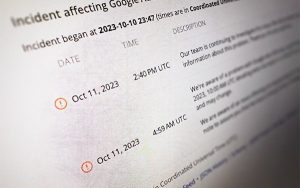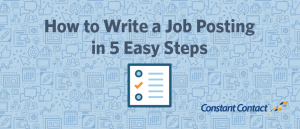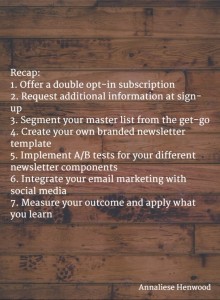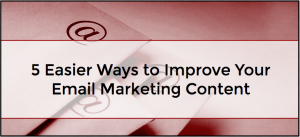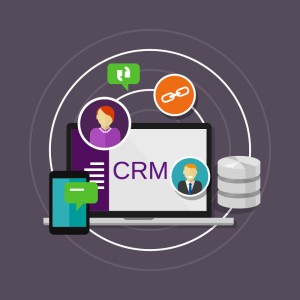
There’s a quote I like that applies to a lot of different aspects of life in general. It also applies very well to sales in particular:
When the only tool you have is a hammer, you tend to see every problem as a nail.
— Abraham Maslow (1908-1970), psychologist & philosopher
To me, this speaks to the need of having access to many tools for a successful project.
Ever since I’ve started teaching Social Selling in general and LinkedIn for sales in particular, I’ve run across a lot of people who delight in trashing both. They see no need for them and are very dismissive of both as bonafide tools in sales.
When I see these types of articles and comments, I just think of the quote above and chuckle.
With that in mind, let me be absolutely clear about Social Selling’s place in sales: Social Selling is just a part of an overall sales strategy.
There, I said it.
Before we go forward, though, let’s look at probably the best concise definition I’ve ever seen of Social Selling. It comes to us via (of all places) Wikipedia:
Social selling is the process of developing relationships as part of the sales process. Today this often takes place via social networks such as LinkedIn, Twitter, Facebook, and Pinterest, but can take place either online or offline. …
(S)ocial selling is focused on sales professionals, rather than marketing professionals. … (S)ocial selling aims to cultivate one-on-one relationships, rather than broadcast one-to-many messages.
As you can see, this core characterization of the philosophy already takes into account that it is part of an overall sales strategy. Many people miss this big point, which is why I’m hitting it so hard in this article.
Social Selling: A “Main” Toolbelt Item
If you ask a tradesperson what one or two tools she or he uses in their job on a daily basis, they’ll be able to come up with it in a snap. Maybe it’s a drill, a Phillips screwdriver, a hex wrench, some kind of electrical test meter or any one of hundreds of tools out there. And, yes, it can be a hammer.
For salespeople, especially those who sell to B2B or large-ticket B2C, I like to think that Social Selling is like one of those one or two main tools they can use to prospect effectively, take those prospects through the sales process, close them and gain referrals after the sale. But it’s certainly not the only tool out available to them.
Let me be clear: If the only tool a salesperson uses is Social Selling, they’re selling themselves short (pardon the pun).
What Social Selling Doesn’t Do
When they’re bashing Social Selling out of hand, naysayers usually bring up one of three arguments against this strategy. When I read the interviews and posts from these people, I usually find myself agreeing with their points, but just up to a certain point. Just like those people who think Social Selling is the only way to go in sales, these complainers are missing the whole idea behind it: Social Selling is one piece of a well-rounded sales strategy and process. (I’ve purposely bolded this kind of statement twice for a reason: It’s true.)
Here are the three areas anti-Social Sellers cite, and my responses to each:
Cold calling. I’ve seen many trainers espouse that Social Selling can eliminate these calls. Sorry, but it ain’t gonna happen. In fact, I still cold call, and I train in Social Selling!
There are times when you just need to pick up the phone and do the things that a decent number of salespeople and business owners don’t like to do: cold call. While Social Selling techniques exist to help you prepare for the call, you’ll still need to put on that headset or pick up the receiver and dial.
Penetrating a vertical that’s not online. Some industry verticals do not have a significant online presence; in other words, their members just do not use Twitter, LinkedIn or the other channels we Social Selling trainers teach. You may find a few people from those sectors on LinkedIn, but they’ll be more of the exception.
In those cases, you’ll likely need to revert to the tried-and-true ways of… well… whatever it is you’ve done in the past to reach your current and potential customer base. It still behooves you, though, to at least have a Social Selling-oriented LinkedIn Profile, so you can “catch” those more tech-savvy prospects who may be searching LinkedIn for someone with your expertise.
Closing deals. By now, you’ve hopefully determined that Social Selling is a huge help throughout the sales process. But Social Selling in and of itself won’t close a deal all by itself. Everything you’ve learned about Social Selling will help you make that path much easier, but it won’t do the crucial work for you. You still need to understand that you need to ask for the sale yourself.
In that vein, you’ll still need to follow some kind of sales philosophy. If you’re hard-core No-Spin Selling, a Sandler-ite or any other type of seller, or if you use some combination of two or several different techniques or philosophies (like I do), you’ll still need an overall sales process.
Other areas exist where Social Selling falls short, too. What I like about Social Selling, though, is that it can easily plug into almost any kind of sales process, which is one of the reasons why I like to work with other sales training professionals. I love to “splice” Social Selling into a sales process to both strengthen it and make it more successful. I’ve seen it done in many different circumstances.
The bottom line is this. Social Selling can be used in many cases and many different kinds of businesses. Social Selling can be a huge factor in your sales process. It can help shorten your sales cycle. It can even attract buyers to you before you even know they exist. Just like cold calling alone isn’t the only way to fill the pipeline, though, Social Selling is not the be-all, end-all in sales. What’s more, it doesn’t work in all cases.
But make no mistake: Those people who brush it off without a second thought are selling themselves short. Especially in today’s heavily tech-connected world.
This article was originally published on LinkedIn and was featured in LinkedIn Pulse’s Sales Strategies and Social Media channels.
(NOTE: The top display photo for this article is from Blue Diamond Photography, and was sourced from Flickr. No changes were made to the photo, except for re-sizing.)
Digital & Social Articles on Business 2 Community(45)


